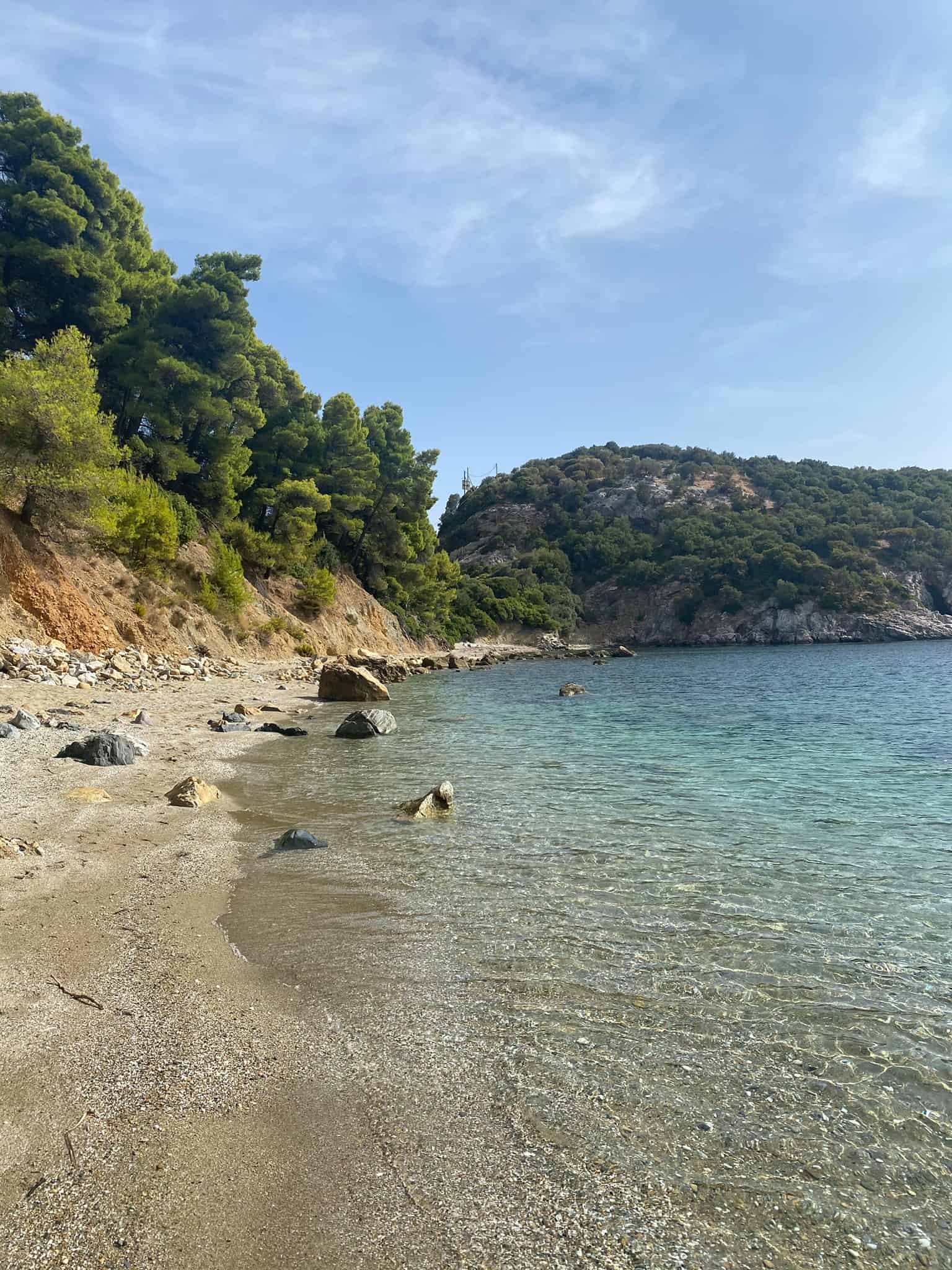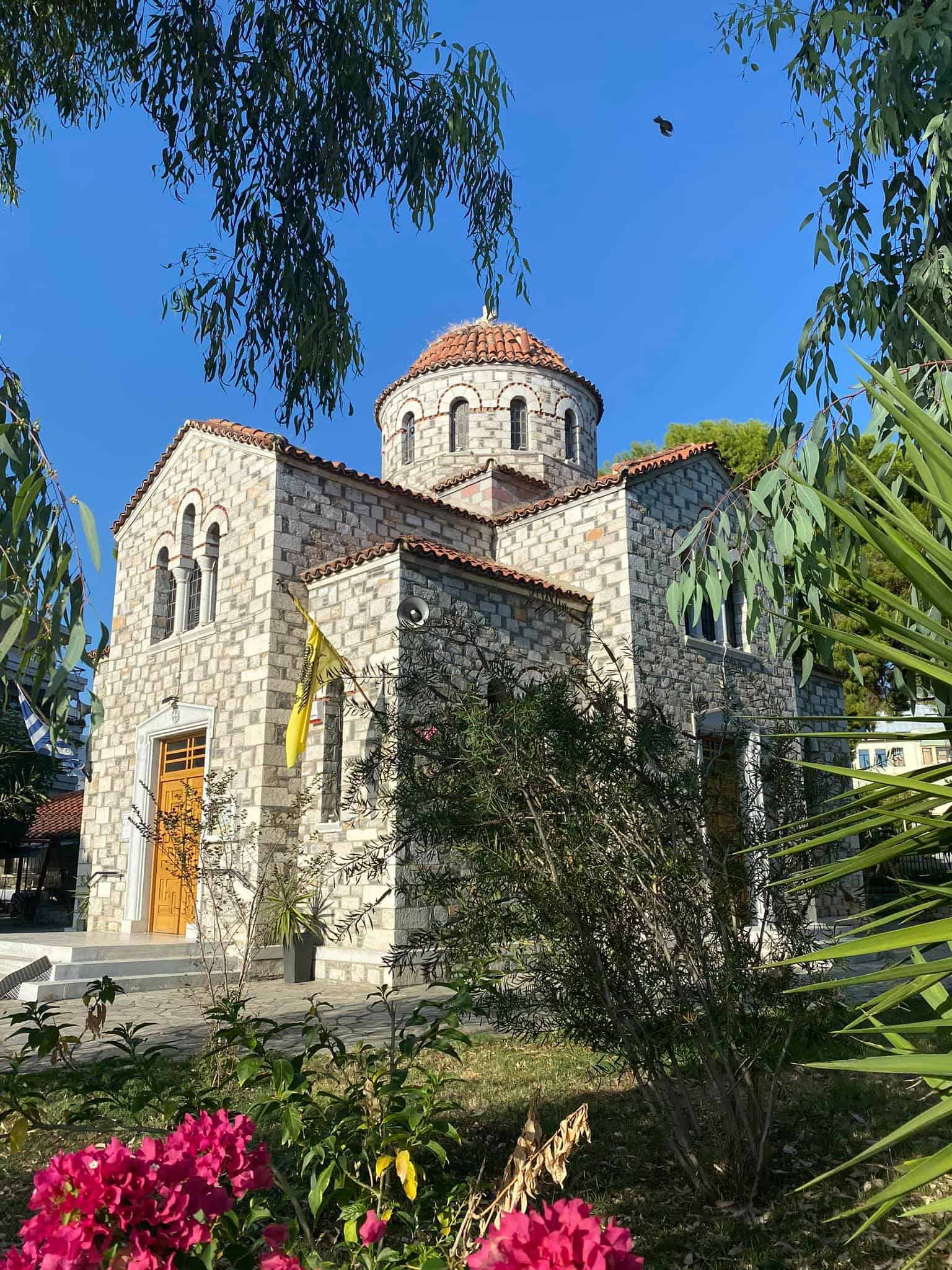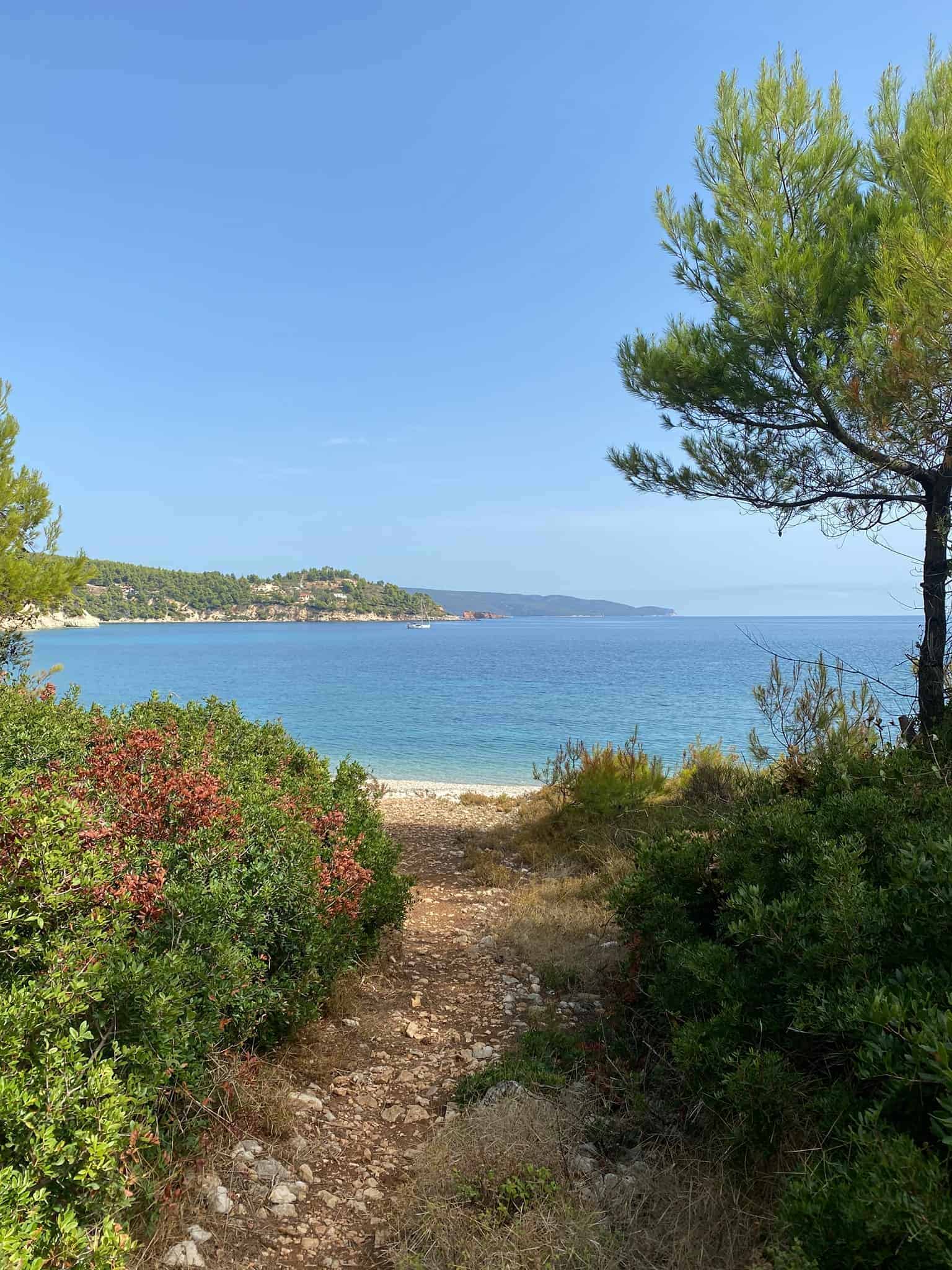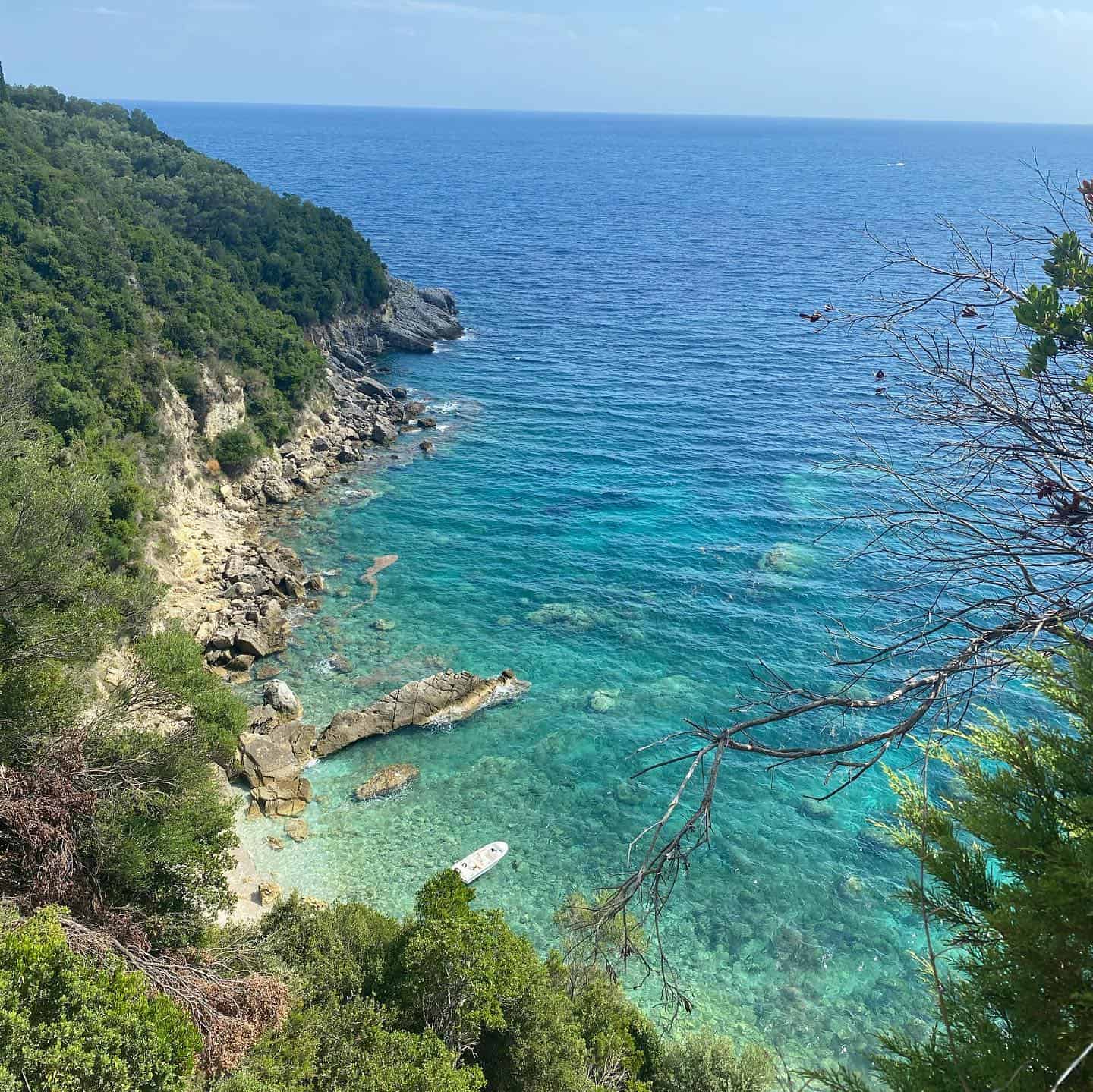Greek Dances: Amazing Traditional Dances from Across Greece
Greek dances (known as “horos”) are one of the most famous parts of Greek tradition and culture. You have probably seen them in movies or TV shows, even if you haven’t yet travelled to Greece.
Chances are, the sheer mention of Greece causes your mind to conjure up images of people doing the famous dance from “Zorbas the Greek” around a busy restaurant. More than likely there is some plate smashing and shouting of “oppa” involved in there too.
This caricature-style image of Greek dancing is charming. However, Greek dances go way beyond just the dance featured in Zorbas the Greek.
They have also been an incredibly important part of the national culture since ancient times.
Traditional Greek Dances

Did you know that there are more than 10,000 traditional Greek dances? Each island and region of Greece has its own local dance.
No Greek knows every dance. But, if you ask your friends in Greece, they will be happy to teach the moves of the traditional dances that originated from their family’s village.
Greek dances make an appearance at virtually every family celebration. A large portion of Greek weddings, birthdays, baptisms, etc is spent dancing the night away.
If you head to a bouzouki hall during a night out in
, you will have the opportunity to join in with some of the folk dances. The audience tends to all dance together as traditional folk music is performed live on stage.
At important public festivals and celebrations such as Greek Easter or the Ikarian Panigiria, people love to get together and dance. This article has been written by a Travel Writer based in Athens and will run through some of the most important pan-hellenic dances to know about.
The History of Ancient Greek Dance

Greek dances date back thousands of years. Greek Philosophers such as Aristotle, Plato, Plutarch, and Lucian reference them in their works.
Many ancient Greek dances, such as the Hyporchema, or the Antistrophe, were performed during rituals of worship and sacrifice. The Ancient Greeks believed that dancing was a gift to humans from the Gods.
Of course, local and national dances have changed a lot over the past few hundred years.
However, some international folk dancing groups do still learn and perform the ancient routines. In addition to regional dances, there are also panhellenic Greek dances that have been adopted throughout the Greek world.
Dances from Across Greece

Greek dances are not a solo affair. Most of them involve a dozen or so people dancing together in a circular line.
The pace, tempo, and style of the dances have significant variations from region to region and in different Greek island groups. Some islands are known for their slow dances, while others are known for uptempo dances with complex footwork.
For instance:
- Aegean island dances – fast and jumpy dances, mostly performed in couples
- Crete – Upbeat.,fast-paced, and energetic
- Epirus – Slow and heavy
- Peloponnese – Simple dances, often slow
- Macedonia – Dances begin slowly with speed steadily increasing
- Thrace (all areas) – Fast, skippy, upbeat and light
A Selection of Important Greek Traditional Dances

It would be impossible to detail all 10,000 dances here. Each is fascinating in its own regard.
However, a selection of some of the most renowned and important Greek dances are detailed below. One of the best ways to experience these is to take a dance class once you arrive in Greece.
Syrtaki
The Syrtaki is arguably the most famous Greek dance of them all. However chances are, you know this routine by a different name.
Syrtaki is the official name for the “Zorbas the Greek” dance. It was created specifically for the movie. This 1964 classic is one of the most popular movies about Greece to this day.
Its name stems from the word “syrtos”. In itself, “syrtos” refers to a whole group of similar dances.
Dances that fall into this category typically start out slow and then get faster and faster as time goes on. The syrtaki is performed with everyone standing in a circle with their arms on each other’s shoulders.
You will often see people dancing the syrtaki at tavernas and bozoukias in old Plaka. It said that the act of everyone putting their arms around each other is symbolic.
It is supposed to resemble drunken revelers heading home from bars and tavernas at the end of a long night out. You learn something new every day, eh?
Hasapiko
The Hasapiko dance is one of the oldest and most famous Greek dances. It was invented in Istanbul several centuries ago, back when Istanbul went by the Greek name of Constantinople.
You might see some similarities between Hasapiko and Sirtaki dancing. Indeed, Mikis Theodorakis used this as his inspiration for creating the Sirtaki.
The dance takes its name from the word “hasapis” which means “butcher” in Greek. And while that might sound random, it was actually Greek butchers who were the first to perform the dance which they did with knives while reenacting Byzantine-era military fighting.
The dance starts slow and gradually builds up to a faster speed, just like many other Greek dances. There is a lot of footwork involved so you will see Hasapiko dancers stomping their feet and kicking their legs outward from left to right.
Despite starting as a “butcher’s dance”, hasapiko dancing has become quite a mainstream part of traditional Greek culture today. The dance is often performed at weddings and other celebrations and festivals.
There is also an even faster version of the dance that is similar to hasapiko and sirtaki. This is known as Hasaposerviko.
(Getting overwhelmed by all these long Greek names yet?) The bozouki is the main instrument that is played to create the background music for hasapiko dances.
Sousta
The Sousta is one of the best-known Greek dances that hails from Crete, Greece’s largest island. It is a dance between a man and a woman that is actually one of the more complex mainstream dances.
When performing the sousta, the couple will dance around the room in a clockwise direction. They dance side by side with their arms over each other’s shoulders and hands interlocked, amongst other dancing couples.
Once they have completed a circuit of the room, the couple separate and dance facing each other. They will rejoin and separate several times and the music is upbeat and lively.
Despite hailing from Crete, the Sousta is performed at various celebrations and parties across Greece today. In certain festivals, dancers perform wearing traditional Cretan attire.
The women don colourful red headscarves and multicoloured, ankle-length skirts while the men wear black trousers, white shirts, and black vests.
Kalamatianos
There are Greek dances that are native to specific villages, islands, and regions. However, there are also those that are beloved across the country. Kalamatianos is one of those.
Ask anyone from Metsovo down to Sounion if they have heard of Kalamatianos. Chances are they know it and have probably danced to it at a family gathering or another.
The dance originates from Kalamata in the Peloponnese. However, it is actually regarded as being the national dance of Greece. Homer actually refers to this dance in his written works.
In a similar manner to the syrtaki, everyone stands in a circle for the Kalamatianos. They hold hands with those next to them and keep their hands slightly raised to shoulder level.
The steps are light and lively. Everyone moves clockwise, and then back and counter-clockwise.
If you get pulled up to dance the Kalamatianos, don’t fret! This is arguably one of the easiest Greek dances and you can easily pick it up as you go.
Tsamiko
The Tsamiko (Τσάμικος) is a fast-paced dance that originates from the Epirus region of Greece. Traditionally, this was a dance for men-only.
However, it is not uncommon for both genders to perform it today. The dance is performed to music of 3/4 meter and the dancers stand, hand-in-hand, in a circle with their elbows slightly bent.
If women join in the dance, there are usually two separate circles for each gender, and women take the outer circle. The group move from left to right rythmically with the music.
As they go, the dancers leap energetically in the air and the dance can be a lot of fun to join in on.
Sometimes, a lead dancer will break away from the group and perform his own impromptu improvised dance. Then the next dancer will follow and so on.
The foustanella is the traditional costume worn during the tsamiko dance. This is a pleated men’s skirt that you will also see worn by the Evzones in Athens.
The Tsamiko is often performed at national celebrations. In particular, it has become synonymous with the Greek war of Independence, and Independence Day which is celebrated on the 25th of March each year.
Pentozali
The Pentozali is the regional folk dance of Crete. “Pento” means five.
This is a fitting title as the name reflects the Cretans’ fifth attempt to liberate their island from the Ottomans. The Pentozali is often performed by dancers at Cretan celebrations and parades.
However, the initial purpose of it was rather martial. It was a dance that was developed to represent the strength, bravery, and heroism of the Cretan people in standing up against the Ottomans.
The dance is fast, and the participants stand in a line. The moves of the Pentozali involve a lot of leaping, tapping, and jumping. Performers have some freedom to improvise with the movements.
Zeibekiko
The Zeibekiko, like many other traditional Greek dances, was originally only performed by men. As time has progressed, people of both genders often enjoy it.
The dance originated in Asia Minor – a region where many Greeks were displaced and often felt frustration at the actions of the Ottomans. It is a complicated dance, with no real steps, and mostly consists of improvised moves.
The intention of Zeibekiko is for the Dancer to “feel” the music and express strong feelings and emotions. It started out as a two-person dance.
However, it later progressed into being a one-man dance to express emotions.
This is not a common dance to perform at a celebratory event. It is more of a meditative, expression of feelings type dance.
Zeibekiko is named after the Zeybeks militia. They lived in the Aegean area of the Ottoman Empire from the 17th century.
Ikariotikos
Ikariotikos is a dance originating from the island of Ikaria in the North-Eastern Aegean. Despite its Ikarian roots, it is often performed across the country.
Native islanders affectionately nickname this dance “Kariotikos”. It essentially has two parts and looks rather tricky to the first-time observer.
The Ikariotikos dance starts with a simple taproot opening that quickly transforms into a nine-step. The Dancers place their hands on each other’s shoulders, and dance in a half-circle.
Learn to Dance in Greece
If you are interested in learning some traditional Greek dances, you will have plenty of opportunities to do so during your Greece travel itinerary. Numerous tour companies offer Greek dancing classes.
Many Greek dance classes entail learning a couple of famous dances with the aid of a local teacher. Then, when you are suitably exhausted, a hearty dinner with drinks is included.
You can find Greek dances all over Greece. However, they are arguably easier to find in popular tourist locations such as Athens, Crete, and Corfu.
You can also catch live performances at the Dora Stratou theatre at philopappou hill or at the Epidaurus festival which takes place every summer in Athens and Epidaurus, Greece.
A handful of reputable considerations are detailed below.
- Greek dancing in Plaka with three-course meal and drinks
- Zakynthos dinner with Greek dancing
- Greek folk dance lesson with dinner and live music in Athens
Final thoughts on famous Greek dances
Greek dances have roots in Ancient Greece. But they are still an important part of modern life for greek diaspora across the world today. They will continue to be loved and enjoyed by Greeks and international dance lovers and tourists for years to come.
Do you have any additional questions about traditional Greek dancing, or planning a trip to Greece in general? I have been living in Greece since 2017.
I am happy to answer any questions that you may have.
Safe travels! Geia sou! Melissa xo
